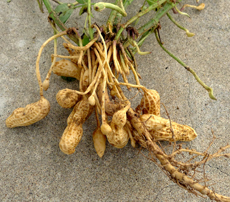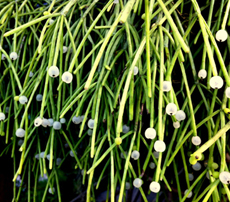Jungle Cacti for the Home Garden
When the term 'cacti' is mentioned, most of us conjure up images of succulent plants covered with sharp spines that grow naturally in a hot and arid desert environment.
Thus it is hard to believe that there are actually 'jungle cacti' that grow naturally in a moist and lush jungle, an environment that is almost the complete opposite of a desert.
What is jungle cacti?
Jungle cacti are a group of cacti that grow in rainforests. Unlike their desert relatives, these plants do not resemble one another and many do not have spines.
Many species of jungle cacti are epiphytes, that is, they are similar to our local bird's nest ferns that grow on the branches of trees, while others grow in spaces between rocks.
They have adapted to growing in an aerated growing media and in cultivation, they require aerated and well-draining conditions. Thus a popular potting media would include large coconut husk chunks. For fertilising, plants are fed using slow-release fertiliser pellets.
Jungle cacti do not tolerate drought and the roots should be kept moist at all times. Depending on the growing conditions, it is usually sufficient to water these plants once a day. More frequent watering may be required if the weather is very hot and dry. Dehydrated plants will show symptoms like wrinkled stems.
Depending on the species, jungle cacti, in general, prefer to be exposed to filtered sunlight for at least six hours daily, but there are species that can be grown under full sun. If you grow them on the balcony or corridor, they will do fine if they are exposed to direct sunlight that streams in during the morning, but they should be protected from the harsh afternoon sun.
Introducing the species
If you are a reader of houseplant books, you would have come across the Thanksgiving and Christmas cacti which are jungle cacti that belong to the genus Schlumbergera. These plants are imported during the festive period and feature bright red or pink flowers.
Another jungle cactus that is most popular with Chinese families in Singapore is the Queen of the Night, which produces large white flowers at night. Two species, Epiphyllum oxypetalum and Epiphyllum strictum, are commonly grown here.
Below is a selection of plants from the genera Rhipsalis and Epiphyllum that are occasionally available in local nurseries and are worth looking out for, if you are looking for candidates to put in a hanging pot or in a vertical garden. Many jungle cactus species adopt a pendulous growth habit where their leafless stems grow long and cascade over the rim of the pots. They can be easily be propagated via stem-cuttings.
Rhipsalis teres
Bearing some resemblance to the mistletoe plant, this epiphytic cactus produces thin, green, cylindrical branches that cascade downwards. It produces small white flowers that are followed by attractive white berries that adorn the dark green stems. This plant prefers moist, semi-shaded conditions.
Rhipsalis micrantha
Another epiphytic cactus with a pendulous growth habit, Rhipsalis micrantha produces long green stems that can either be flattened or three-sided. It also prefers moist and semi-shaded conditions. The plant produces small, white flowers which are then followed by white berries that are reddish at the apex.
Pseudorhipsalis ramulosa
Commonly called the Red Rhipsalis, the pendulous stems of this plant are flattened on both sides and take on a vivid red colouration when grown under direct sunlight. Due to this, it was marketed recently in local nurseries as a lucky festive plant for the Lunar New Year.
Epiphyllum anguliger
Still an uncommon jungle cactus species locally, this plant is commonly known as the 'Fish Bone Cactus' due to the interesting appearance of its flattened, deeply-toothed stems. It prefers to be grown under semi-shade and is ideal for growing in a section of the garden with other plants whose common names are derived from animals – a great way for children to learn about such plants!

Epiphyllum phyllanthus This plant is another lucky festive plant that was sold for the Lunar New Year festivities. A mutated form of Epiphyllum phyllanthus, it is labelled as 'mini dragon fruit' due to the small, oval, pink fruits it produces, which bear superficial resemblance to the much larger fruit, also produced by a cactus species. This plant is admired for its numerous twisted and curled stems.
Epiphyllum pumilum
This species of Epiphyllum is sometimes thought to be the miniature version of the more frequently grown Epiphyllum oxypetalum or Epiphyllum strictum due to its much smaller size and similar-looking white flowers. It has gained popularity as a houseplant in Singapore due to its free-flowering and space-saving attributes.

By Dr Wilson Wong
Have views or comments on this article? Let us know via this form. If you would like to give us feedback on any other areas relating to our parks and gardens, please submit via https://www.nparks.gov.sg/feedback









Fabian DOH 1/22/2014 9:41:51 AM